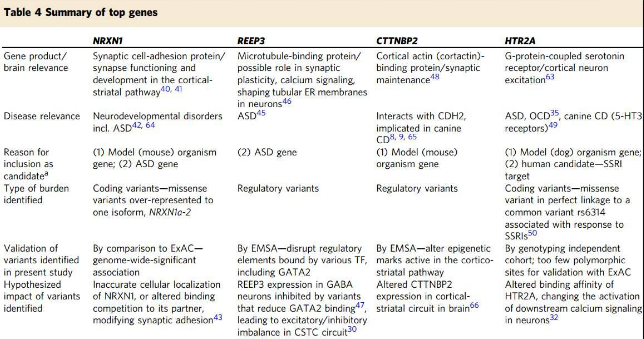Things must be put together neatly; check several times whether the door is locked or not before going out... I believe that everyone has such a friend around us. We generally call this behavior "obsessive-compulsive disorder". It is estimated that more than 80 million people around the world suffer from obsessive-compulsive disorder, many of whom develop involuntary obsessive thinking and make repetitive behaviors that are difficult to be understood by outsiders.
As people understand the obsessive compulsive disorder more and more deeply, we gradually realize that it may be related to heredity. A genome-wide association study (GWAS) results show that glutamate signaling pathway plays a key role in this behavior, but what specific gene mutation can cause obsessive-compulsive disorder? It is still inconclusive.
Recently, Nature Communications published a paper online—in the human genome, there found 4 genes closely related to obsessive-compulsive disorder. This research helps us to fundamentally understand the obsessive-compulsive disorder disease.
In order to find these genes, scientists first established a candidate gene pool based on previous studies. Some of these candidate genes came from canine studies, some from rodent studies, and others from human studies. After that, scientists got 608 candidate genes.
Subsequently, they sequenced 592 European descendants with obsessive-compulsive disorder, and found out 560 volunteers with the same ancestral origin as controls. After sequencing, more than 120 thousand single nucleotide polymorphisms (SNP) were identified, of which 41,504 SNPs were present in multiple analyses. They were believed to be of high reliability and therefore were used for subsequent analysis.
In the next study, scientists focused on assessing which SNP was significantly more prevalent in OCD patients. This analysis found 5 genes with high correlation of OCD in 608 genes. Excluding a gene that might have been mistakenly introduced into by other causes, the figure was finally set to 4. Interestingly, the 4 genes played a key role in the synapse. Among them, NRXN1 encoded a synapse / cell adhesion protein that affected cell localization or interaction, thereby affecting synaptic function; HTR2A encoded a G protein-coupled serotonin receptor which was widely expressed in the central nervous system; the protein encoded by the REEP3 gene affected the endoplasmic reticulum in neurons, which may further affect the function of these neurons; CTTNBP2 gene regulated the formation of synapses.
With the point of view, these 4 genes were involved in neural pathways and obsessive-compulsive disorder, and can affect the signal transmission of serotonin and glutamate, as well as synaptic connections. Their findings suggested synaptic adhesion as a key component in compulsive behaviors, and showed that targeted sequencing plus functional annotation could identify potentially causative variants, even when genomic data were limited.
The 4 genes found in this study greatly supported the genetic factors behind obsessive-compulsive disorder. At present, there is no effective drug for the treatment of obsessive-compulsive disorder. This can be found from our own—the pathogenesis of obsessive-compulsive disorder is inextricably linked to genetic variants. Before correction of these genetic mutations, all therapies can be said to be temporary. The treatment of OCD will not to be easy.


